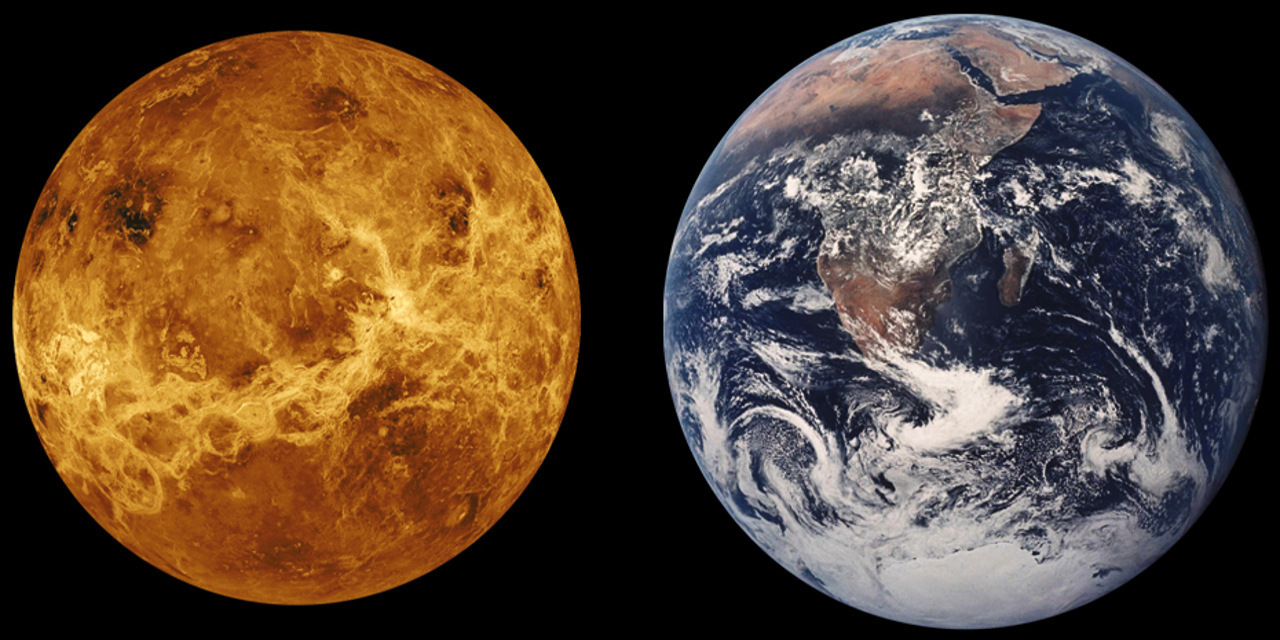This claim raises the possibility of beings that could have traveled between the planets of the solar system rather than between three planets. Could Venus be the source of life on Earth?
Science fiction writers once imagined Venus as a world of oceans or swamps beneath many clouds. They probably weren’t wrong, but they were way too late. According to the modeling, the closest planet to Earth in terms of size and distance from the sun can not only have oceans, but also live for more than a billion years. IFLScience according to
When large asteroids collide with a celestial body, some of the rocks they eject escape into space and often end up colliding with another planet or moon. The occasional discovery of meteorites from Mars and evidence of ancient oceans has raised the possibility that life may have begun outside a planet. However, through these influences, it could have been transported to Earth, where conditions would have been more ideal. For a short time, Mars might have been more suitable for life.
Venus is more attractive than Mars and has a much denser atmosphere. Therefore, it would have taken much longer to get some of the rock shards out. However, meteorite exchange is possible. What makes it really interesting is that Venus was once a place where life could evolve, rather than the hell we know today. According to a study published in the Proceedings of the National Academy of Sciences, this is unlikely, but not impossible, and could represent a significant overlap with the age of life on Earth.
Was Venus suitable to bear life?
Venus is a difficult place to study, because its clouds make it almost impossible to observe, and probes that enter the atmosphere cannot last long in temperatures that melt lead. Thus, the number of tasks there is very small. However, as Alexandra Warren, a University of Chicago doctoral student and supervisor Professor Edwin Kite, notes, this will change in the next decade, the main reason being to see if there was a habitable period on Venus.
Warren and Kite first explore the question of how much water Venus had before it was heated by a runaway greenhouse effect. Note that the modern atmosphere of Venus is known to have a ratio of deuterium to hydrogen 150 times that of Earth’s.
Since Venus was formed from the same material as Earth, it is very unlikely that Venus would have this much deuterium to begin with. Instead, the ratio is assumed to reflect the fact that hydrogen, being lighter, leaves the planet’s atmosphere much more easily than deuterium. This ratio indicates that Venus had a lot of hydrogen, and may have been associated with water.
Warren and Kait admit that the deuterium/hydrogen ratio doesn’t prove that water was present at the same time — perhaps comets carried a lot of both over time and the hydrogen slowly escaped. However, they note that the oxygen in Venusian waters cannot escape in the same way. They left the planet as they interacted with surface rocks.
Could Venus be Earth-like?
They used this fact to model different scenarios for the original amount of water on Venus and the rate at which it was removed, and see which one corresponds to today’s atmosphere.
Of all the scenarios the pair entered into their form, only 2.6 percent resulted in anything matching what we know. These provide a quantitative range of initial ocean size and residence time. If only there was such an ocean. They concluded that Venus has enough water to cover its entire surface up to 500 meters deep if it were smooth. Given how rough Venus is, this provides plenty of opportunities for large ocean basins and landmasses. At best, they could have survived until 3 billion years ago.
This figure is the maximum. Perhaps Venus was always dry or had smaller oceans that quickly disappeared. Hopefully, future missions will be able to find out. But even then, we can still dream of a time when all three planets in our solar system had oceans. And that the asteroids that collided with one of them could have transferred living organisms to the others.
study a Proceedings of the National Academy of Sciences It was published in the journal
source: IFLScience












































